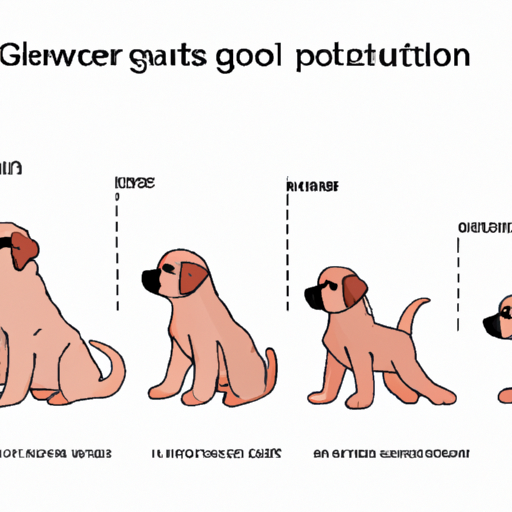Every dog parent anxiously waits to see just how big their furry friend will get. The growth rate of dogs is a fascinating subject, filled with numerous factors that come into play. This guide will help you understand when your dog will stop growing and the factors that affect their growth.
Understanding the Growth Cycle of Dogs
Just like humans, dogs grow at their own pace. The rate at which a dog grows is influenced by various factors such as breed, nutrition, and health. Generally, dogs stop growing between 1 and 2 years old, but some breeds can grow up until 3 years old.
- Small Breeds: Small breeds like Chihuahuas and Toy Poodles typically stop growing around 6 to 8 months of age.
- Medium Breeds: Medium breeds like Bulldogs and Shih Tzus often stop growing between 8 to 12 months old.
- Large Breeds: Large breeds like Great Danes and Saint Bernards may continue to grow up to 24 months or even beyond.
Factors Influencing a Dog’s Growth
Several factors influence when a dog stops growing. Understanding these factors can help you predict when your dog will reach its full size.
Breed
Breed is the most significant factor in determining when a dog will stop growing. Small breed dogs tend to grow faster and reach maturity sooner than their larger counterparts.
Nutrition
Proper nutrition is vital for a dog’s growth and development. A balanced diet will support healthy growth and development, while an unbalanced diet can lead to growth abnormalities.
Health
Health issues can also impact a dog’s growth. Conditions such as worms or illnesses can slow down a dog’s growth.
How to Measure a Dog’s Growth
To understand your dog’s growth, it’s essential to regularly track their size. Here’s a simple way to do this:
- Measure at the Shoulder: This gives you the height of your dog.
- Measure from Chest to Tail: This gives you the length of your dog.
Table: Average Dog Sizes by Breed
| Breed | Average Height | Average Weight |
|---|---|---|
| Chihuahua | 5-8 inches | 3-6 lbs |
| Bulldog | 12-15 inches | 40-50 lbs |
| Great Dane | 28-32 inches | 110-175 lbs |
Signs Your Dog Has Stopped Growing
How do you know when your dog has stopped growing? Here are a few signs:
- Stabilized Weight: If your dog’s weight has remained constant for about two months, they have likely stopped growing.
- Physical Proportions: As dogs mature, their proportions will settle. Their legs will no longer seem too long for their body, and they will have a more adult appearance.
- Teeth Development: By the time a dog has stopped growing, they will have all of their permanent teeth.
The Impact of Neutering on Growth
Neutering or spaying your dog can potentially affect their growth. Research suggests that dogs that are neutered before they stop growing may end up slightly taller than they would have if they had not been neutered.
FAQs
1. Can I Determine How Big My Puppy Will Get?
While it’s not an exact science, you can estimate your dog’s final size based on their breed and the size of their parents.
2. What If My Dog Is a Mixed Breed?
If your dog is a mixed breed, determining their adult size can be more challenging. A DNA test can help identify what breeds make up your dog and give you a better idea of their expected size.
3. Does Exercise Affect Growth?
While regular exercise is essential for a puppy’s health, excessive exercise can be harmful to a growing puppy’s joints and bones.
4. What Should I Feed My Growing Puppy?
Feed your puppy a balanced diet specifically formulated for puppies. These diets provide the nutrients necessary for healthy growth and development.
In conclusion, understanding when your dog will stop growing can help you prepare for their future needs. Remember, every dog is unique, so these guidelines may vary. Always consult with your vet if you have any concerns about your dog’s growth.



